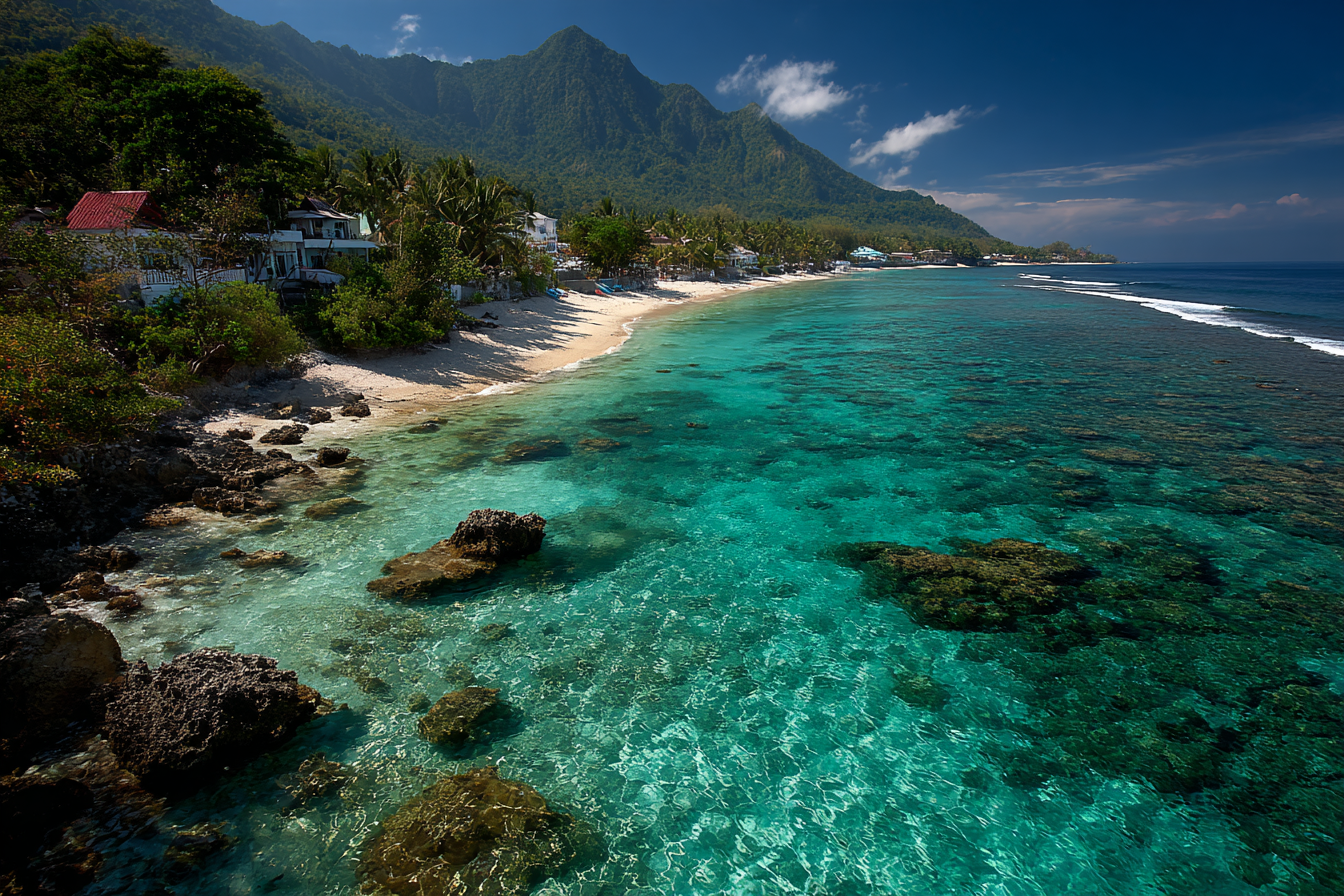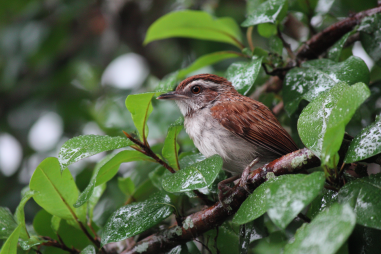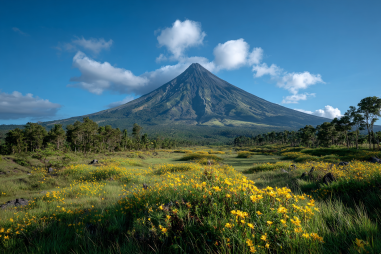Nestled in the northern part of Mindanao in the Philippines, Camiguin Island is a gem waiting to be discovered. Known for its pristine beaches, intriguing volcanic landscapes, and rich culture, this small island offers a peaceful yet adventure-filled escape from the typical tourist trails. Whether you’re a nature lover, a beach bum, or an adventure seeker, Camiguin has something to captivate your heart. This comprehensive travel guide will help you plan your perfect visit, covering everything from how to get there to the best spots for dining and exploring.
Introduction to Camiguin Island
Often called the “Island Born of Fire,” Camiguin is famous for its volcanic origins. It has seven volcanoes, some of which are still active, contributing to its lush green landscapes and hot springs. Despite its small size of just around 238 square kilometers, Camiguin boasts an impressive variety of natural wonders. The island is also steeped in local legends, colorful festivals, and a laid-back atmosphere that makes it the perfect getaway destination.
How to Get to Camiguin
Getting to Camiguin requires a bit of planning, but the journey is part of the adventure! The most common way to reach Camiguin is by flying into Laguindingan Airport (the nearest major airport serving the area) in Cagayan de Oro city. From there, you can catch a van or bus to the port of Balingoan, which takes approximately 2 to 3 hours.
At Balingoan port, a ferry ride of about 45 minutes takes you directly to the Balbagon port in Camiguin. Ferries frequently run throughout the day, making connections relatively easy. Alternatively, if you find yourself in Cagayan de Oro, there are direct ferry routes to Camiguin, although these runs are less frequent and longer.
Best Time to Visit
The ideal time to visit Camiguin is during the dry season, which runs from November to May. This period offers sunny, pleasant weather perfect for beach outings, hiking, and island hopping. The months of March to May tend to be the driest, so if you’re keen on outdoor activities, plan your trip then.
Avoid the rainy season from June to October if possible, as heavy rains and potential typhoons can disrupt travel plans and access to some attractions. However, visiting during the off-season also means fewer tourists, so if you don’t mind the occasional shower, it might be a quieter time to enjoy the island.
Top Attractions in Camiguin
Camiguin offers a diverse range of attractions that showcase its natural beauty and cultural heritage. Here are some must-see spots:
- White Island: A stunning uninhabited sandbar with powdery white sand and crystal-clear turquoise waters, perfect for swimming and sunbathing.
- Mt. Hibok-Hibok: One of the island’s active volcanoes, popular for hiking enthusiasts seeking challenging treks paired with breathtaking views.
- Sunken Cemetery: A haunting yet beautiful underwater cemetery marked by a large cross. It’s a popular spot for snorkeling and diving while learning about the island’s volcanic past.
- Katibawasan Falls: A majestic waterfall surrounded by lush greenery, ideal for a refreshing dip and photo ops.
- Ardent Hot Springs: Natural hot springs warmed by volcanic activity, perfect for relaxation after a day of exploring.
- Camiguin Cold Spring: A cool freshwater spring located in Mambajao, great for swimming and cooling off.
- Old Churches and Historical Sites: Sites like the Guiob Church Ruins and San Nicolas de Tolentino Church showcase the island’s rich history and culture.
Accommodation Options
Camiguin offers a range of accommodations that cater to different budgets and preferences, from budget-friendly guesthouses to cozy resorts.
- Budget inns and hostels: Ideal for backpackers and travelers looking to save money, these are scattered in Mambajao, the island’s main town.
- Mid-range hotels: These provide comfortable amenities and often feature pools, restaurants, and easy access to local attractions.
- Beachfront resorts: For those wanting to indulge in the island’s natural beauty, several resorts offer stunning ocean views and direct beach access.
- Homestays and Airbnbs: Staying with locals can provide a more authentic experience and insight into Camiguin’s culture and lifestyle.
Local Food and Dining
Sampling Camiguin’s local cuisine is an essential part of your trip. The island offers delicious traditional dishes and fresh seafood, characterized by simple yet flavorful ingredients.
- Seafood: Being an island, freshly caught fish, crabs, and shrimps are abundant and often prepared grilled, fried, or in soups.
- Lechon Kawali: Crispy pork belly, a favorite among locals and visitors alike.
- Native delicacies: Try “Camiguin’s Lanzones,” a sweet and juicy tropical fruit that is a local specialty and usually in season from September to October.
- Street food: Don’t miss small eateries and karenderias serving affordable Filipino favorites like adobo, sinigang, and halo-halo for dessert.
Getting Around the Island
Transportation options on Camiguin are straightforward, though somewhat limited compared to larger cities. For short distances, tricycles are everywhere and are a convenient way to get around town or nearby attractions.
For more extensive island exploration, you can rent a motorbike or scooter, which gives you freedom and flexibility. Several rental shops in Mambajao offer affordable rates and helpful advice on routes.
Alternatively, you can hire a habal-habal (motorcycle taxi) or arrange for a van or car rental with a driver, especially if you want to visit multiple spots in one day without worrying about parking or navigation.
Tips for Travelers
- Cash is king: While there are a few ATMs in Mambajao, it’s best to bring enough cash as many smaller establishments don’t accept cards.
- Pack light but smart: Camiguin’s climate is warm and humid, so bring lightweight clothes, swimwear, hiking shoes, and insect repellent.
- Respect local customs and environment: Always ask permission before taking photos of locals and avoid littering, especially on beaches and natural sites.
- Internet connectivity can be patchy: Plan accordingly and download offline maps or guides.
- Start early: To maximize your time and avoid afternoon heat, begin your excursions early in the day.
Sample Itineraries
3-Day Itinerary
- Day 1: Arrive at Camiguin, settle into accommodation, visit Katibawasan Falls and Ardent Hot Springs for a relaxing afternoon.
- Day 2: Explore White Island in the morning, then head to the Sunken Cemetery for snorkeling and visit Guiob Church Ruins. End the day with sunset at the Old Volcano Peak.
- Day 3: Hike Mt. Hibok-Hibok early morning, then visit Camiguin Cold Spring before departing.
5-Day Itinerary
- Day 1: Arrival and leisure at the hotel, visit local markets and try native food.
- Day 2: Island hopping – White Island, Mantigue Island, snorkeling spots, and seaside picnic.
- Day 3: Full day Mt. Hibok-Hibok trek with picnic lunch.
- Day 4: Cultural tour including churches and museums, afternoon at Ardent Hot Springs.
- Day 5: Relax at the beach, final shopping, then departure.
Camiguin Island’s serene atmosphere combined with its natural wonders make it a unique destination you won’t forget. With adequate planning and an adventurous spirit, your trip can become an enriching experience full of breathtaking sights, delicious food, and warm hospitality.







